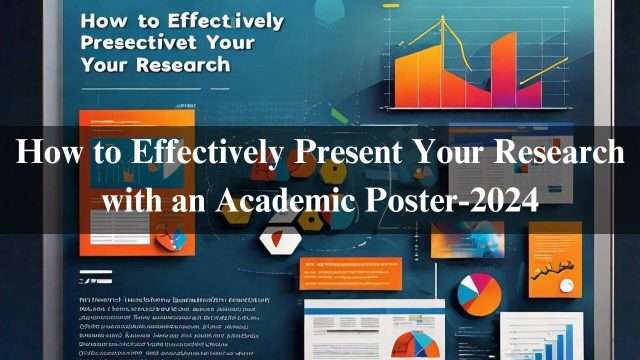Introduction
When showcasing your research findings, academic posters are an invaluable tool. These visual representations provide an opportunity to present complex information concisely and engagingly. However, designing an effective academic poster requires careful planning and attention to detail. In this blog post, we will explore essential tips and techniques to help you become an expert in presenting your research through academic posters.
Table of Contents
Understanding the Purpose of an Academic Poster
Before diving into the design process, it’s crucial to understand the purpose of an academic poster. Academic posters are a snapshot of your research, capturing the key points and findings in a visually appealing format. They are commonly used at conferences, symposiums, and other academic events to communicate your research to a wider audience.
You can also read this article: Ways Dissertation Writing Service Can Help You
Planning and Organising Your Content
To create a compelling academic poster, it is essential to plan and organise your content effectively. Start by outlining the main sections of your poster, such as the introduction, methodology, results, and conclusion. Each section should be clear, concise, and visually distinct. Use headings and subheadings to guide the reader through your research.
Engaging Visual Design
Academic posters should be visually appealing to attract attention and engage the audience. Consider using a clean and professional layout that aligns with your research topic. Select a colour scheme that is visually pleasing and enhances readability. Incorporate relevant images, graphs, and charts to present data and findings effectively. However, avoid cluttering the poster with excessive visuals, as it can distract from the main message.
Choose an Appropriate Font and Font Size
The font and font size you choose can significantly impact the readability of your academic poster. Opt for clear and legible fonts, such as Arial or Helvetica. Use a consistent font size throughout the poster, ensuring that the text is readable from a reasonable distance. Headings and subheadings should be larger and bolder than the body text to create a visual hierarchy.
Craft a Captivating Title
The title of your academic poster is the first thing that catches the reader’s attention. Make it concise, descriptive, and intriguing. Highlight the main focus of your research and use keywords that are relevant to your field. A well-crafted title will entice viewers to explore your poster further.
Presenting Data Effectively
Graphs, charts, and tables are essential for presenting data in an academic poster. Choose the most appropriate format to display your data clearly. Label all axes and provide clear explanations for any abbreviations or symbols used. Use colours strategically to differentiate data sets and highlight key points. Ensure that the data is easily interpretable and supports your research findings.
Summarise Key Points with Bullet Points
To make your academic poster more accessible, use bullet points to summarise the main findings and takeaways. Keep the text concise and avoid lengthy paragraphs. Bullet points provide a quick overview of your research, making it easier for the audience to grasp the main points even if they have limited time.
Proofread and Edit
Before finalising your academic poster, thoroughly proofread and edit the content. Check for spelling and grammar errors, and ensure that the text is coherent and flows smoothly. Seek feedback from colleagues or academic advisors to get valuable input on your poster’s clarity and effectiveness.
You can also read : Primary vs Secondary Research Articles: Understanding the Differences
Conclusion
Mastering the art of presenting your research with an academic poster requires careful planning, attention to detail, and effective visual communication. By understanding the purpose of an academic poster, organising your content, and using engaging visual design, you can effectively present your research to a wider audience. With practice and continuous improvement, you can become one of the academic poster experts, effectively showcasing your research findings and making a lasting impression.







